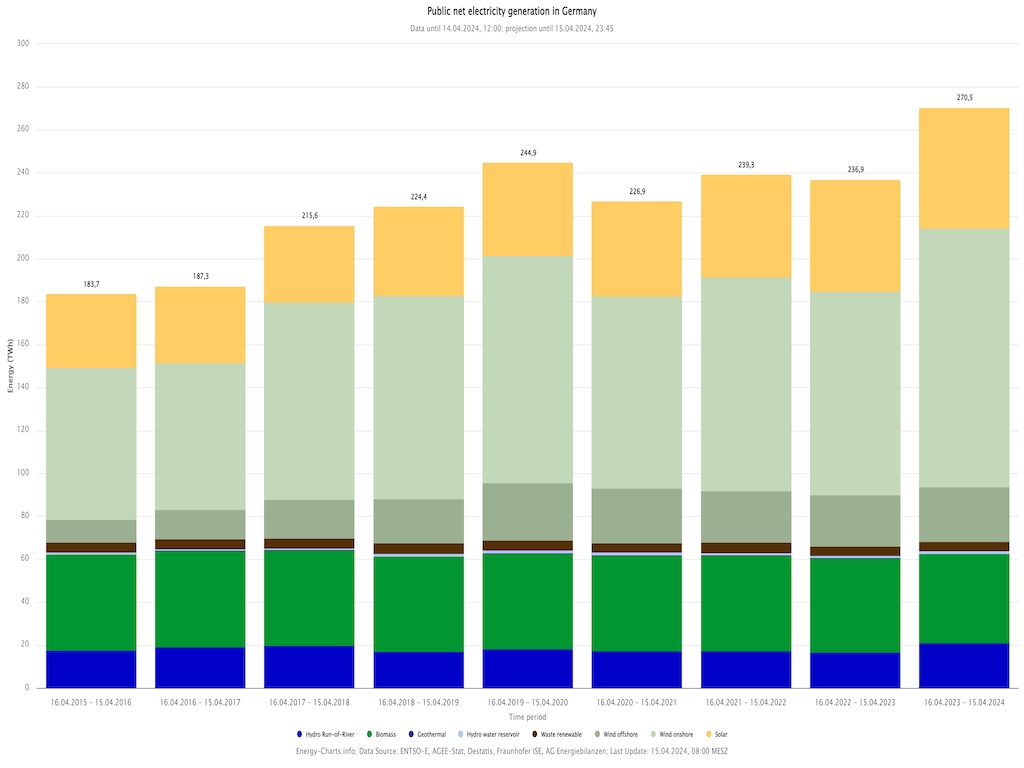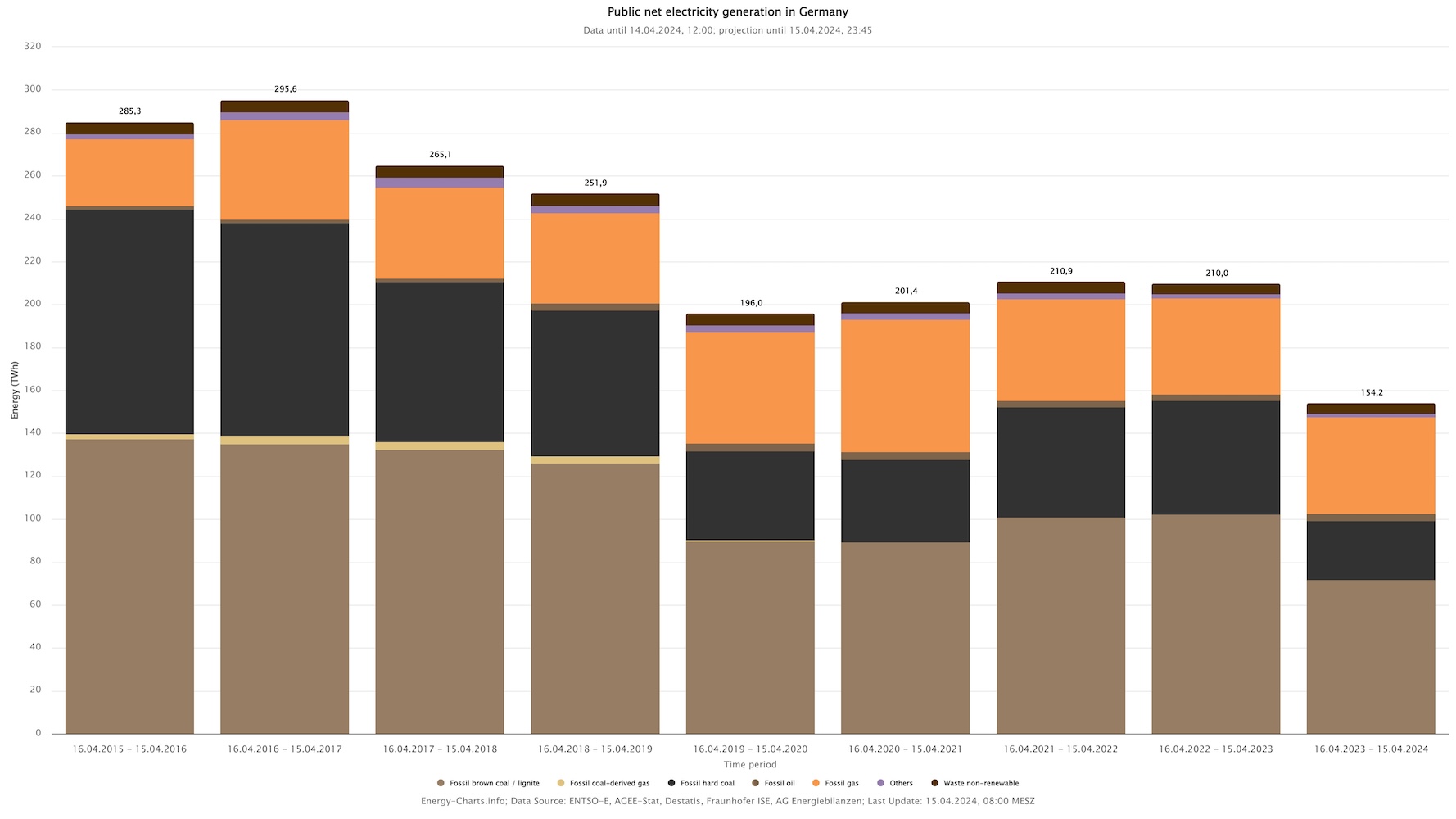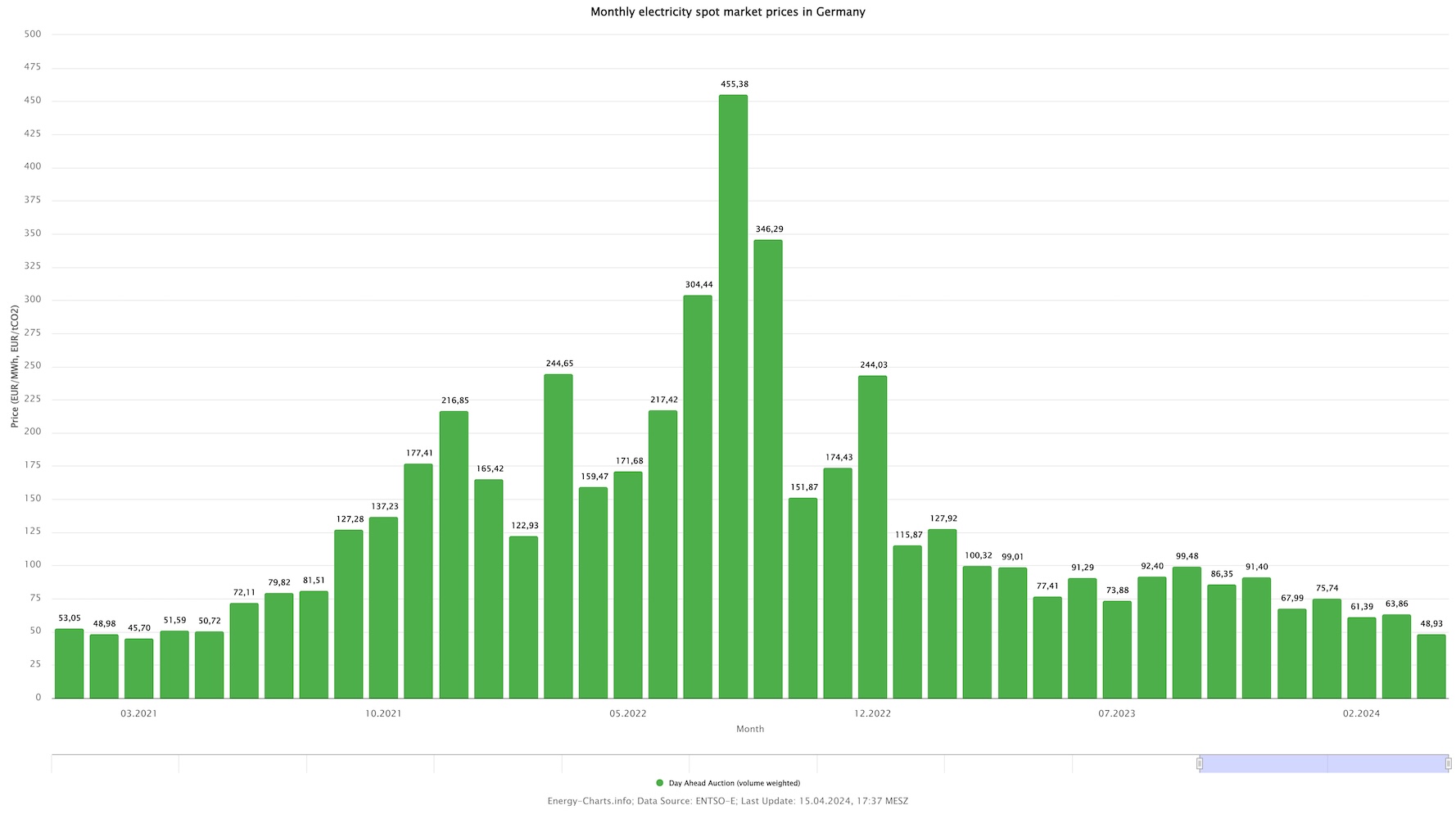April 2024 | On 15 April 2023, the era of nuclear power came to an end in Germany with the shutdown of the last three nuclear power plants in Emsland, Neckarwestheim and Isar. On the first anniversary of the phase-out, the Fraunhofer Institute for Solar Energy Systems ISE takes stock.
Nuclear power has been replaced by increased generation from renewable energies. Generation from fossil fuels also fell, which was compensated for by electricity savings, in-house power generation from photovoltaics, a reduced load and imports. Electricity prices fell to the level of 2021. The analysis is based on the data platform energy-charts.info
In the last year of operation from 16 April 2022 to 15 April 2023, German nuclear power plants generated 29.5 TWh of electricity and supplied 6.3 per cent of net public electricity generation. Even after its shutdown, nuclear power continues to cause debate. In view of increased electricity imports in the summer of 2023, it was claimed that Germany had become an electricity importer or that nuclear power had been replaced by coal.
“In fact, electricity generation from nuclear power has been replaced by renewable energies. In the first year without nuclear power, around 270 TWh of renewable electricity was generated, 33 TWh more than in the same period last year. Our electricity mix is cleaner than ever before,” explains Prof Bruno Burger, who is responsible for Fraunhofer ISE‘s energy-charts.info data platform.
Renewable energies accounted for 58.8 per cent of the electrical load between April 2023 and April 2024. This is the sum of public electricity consumption and grid losses.

net renewable electricity generation in Germany
Decline in fossil fuels and load
Parallel to the increase in generation from renewables, electricity generation from fossil fuels has declined. In the first year without nuclear energy, around 154.4 TWh of electricity was generated from coal, natural gas, oil and waste. This is significantly below the figures from previous years and 26 per cent below the same period in the previous year.
Their share of net public electricity generation fell to 33.7 per cent. Reasons for this include the high prices for natural gas and hard coal and the high CO2 certificate costs. The load also fell by 2.1 per cent to 459 TWh. There are many reasons for this: electricity savings in the industrial and private sectors, a decline in production and higher own utilisation of photovoltaic electricity.

Imported electricity cheaper in summer
Imports increased in the first year without nuclear power plants, although Germany had sufficient power plant capacity to be self-sufficient at all times. A load of around 75 GW is offset by around 90 GW of non-fluctuating generation capacity in Germany. Added to this are the renewable generators solar (approx. 85 GW) and wind (approx. 70 GW) and pumped storage (approx. 9.5 GW).
“The fact that we imported 23 terawatt hours of electricity compared to 21.3 terawatt hours of exports in the previous year is therefore not due to a lack of generation capacity in Germany. The reason is the significant fall in electricity exchange prices. In the summer, renewable power plants in the Alps and in Denmark, Norway and Sweden generated cheap electricity, meaning that German coal-fired power plants were unable to compete. As a result, a lot of electricity with low greenhouse gas emissions was imported to Germany,” explains Prof Burger.
In addition, many nuclear power plants in France were back on the grid in the summer following the outages in 2022 and exported surplus electricity.
Electricity exchange prices continue to fall
Electricity prices on the exchange (day-ahead) have fallen back to the level of April 2021 and are therefore lower than before the war in Ukraine. The average monthly day-ahead exchange electricity price in April 2024 is €48.39/MWh or 4.8 cents/kWh. Household electricity prices have also recovered and are at the level of 4 June 2021 for new customers.
The analysis of the period from mid-April 2023 to mid-April 2024 therefore shows that the loss of nuclear power in Germany has been well compensated for. Contrary to claims, the increase in imports was not due to a lack of generation capacity in Germany, but to the favourable generation prices of renewable power plants in the Alps and Scandinavia.

Background
The Fraunhofer-Gesellschaft, based in Germany, is the world’s leading organization for application-oriented research. With its focus on futureoriented key technologies and the utilization of results in business and industry, it plays a central role in the innovation process. As a guide and driving force for innovative developments and scientific excellence, it helps to shape our society and our future. Founded in 1949, the organization currently operates 76 institutes and research facilities in Germany. Around 30,800 employees, most of whom are trained in the natural sciences or engineering, work on the annual research volume of 3.0 billion euros. Contract research accounts for 2.6 billion euros of this.